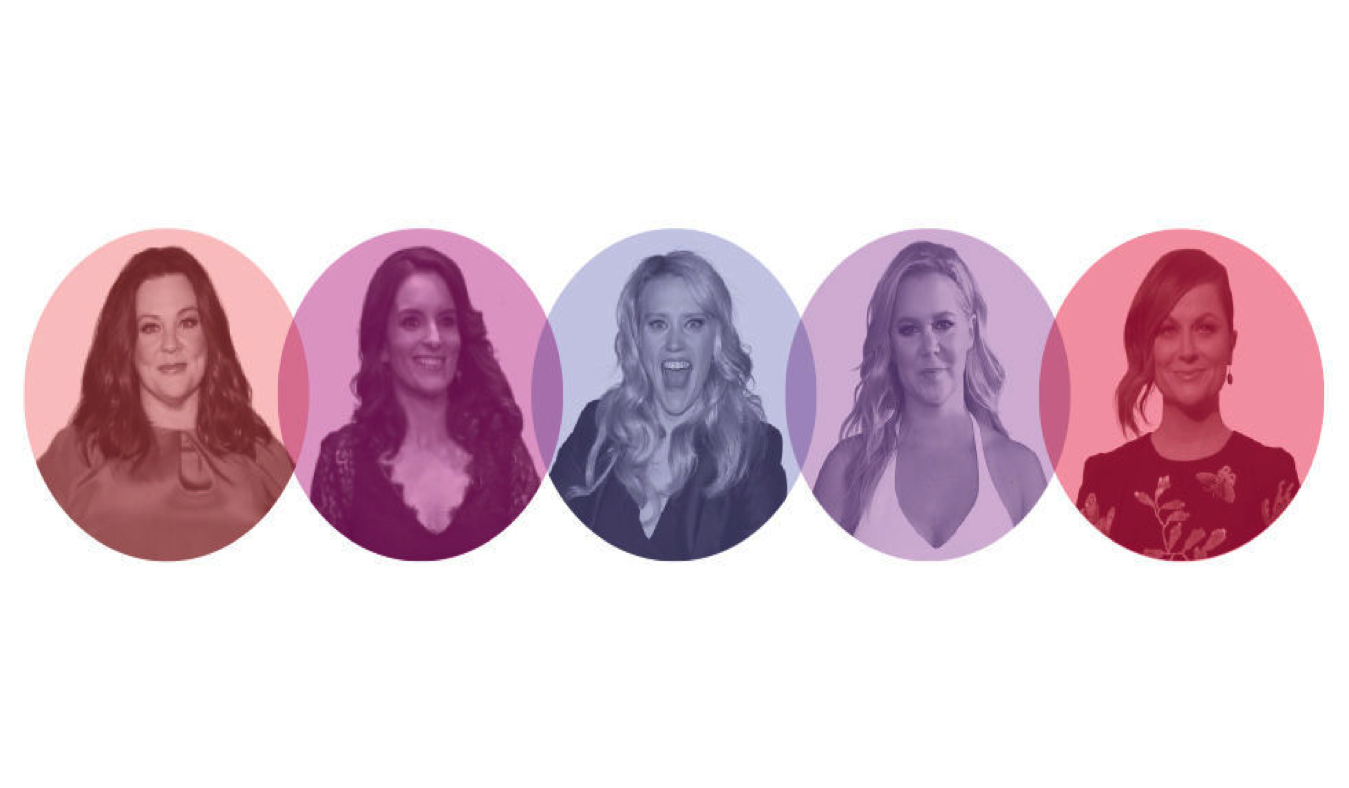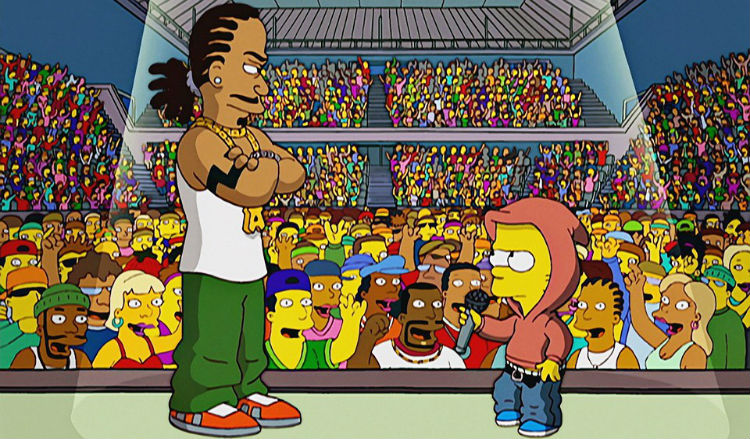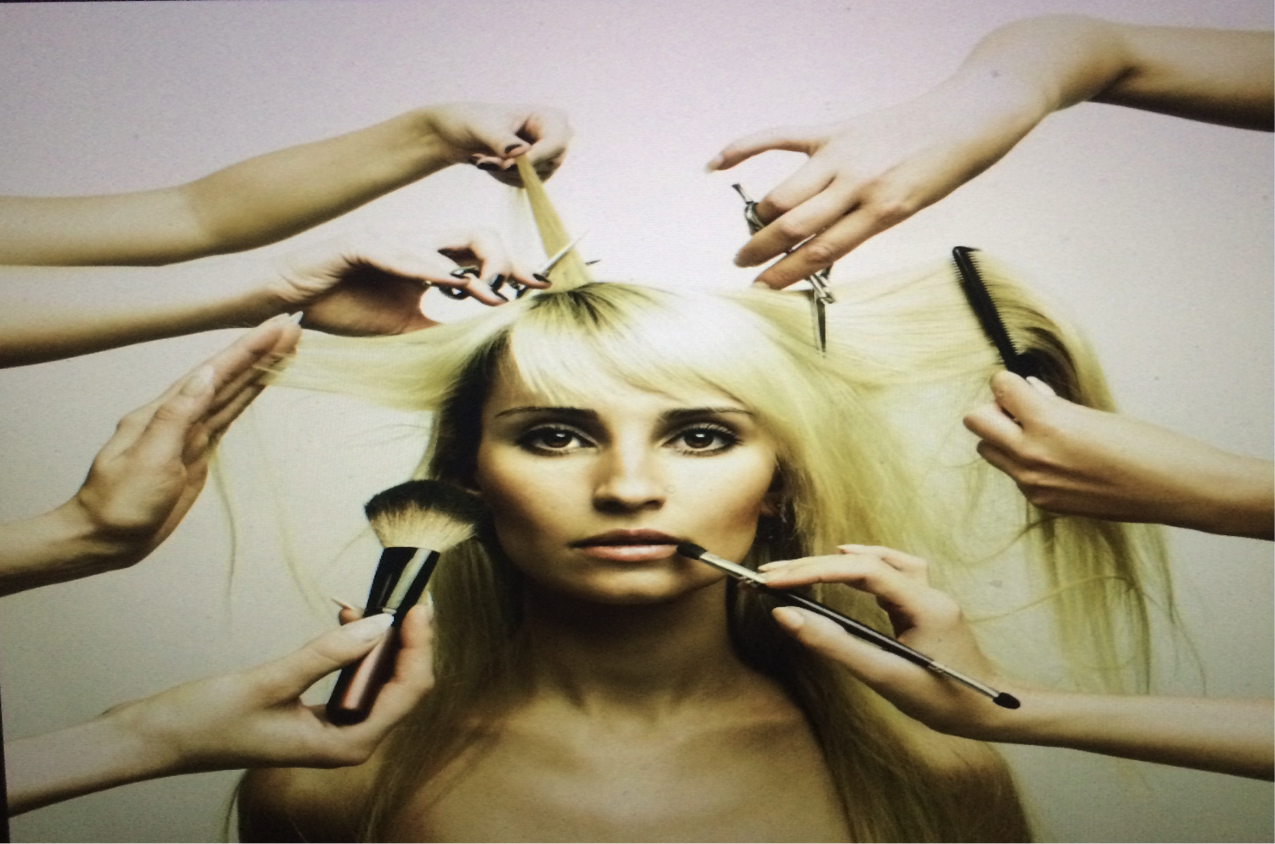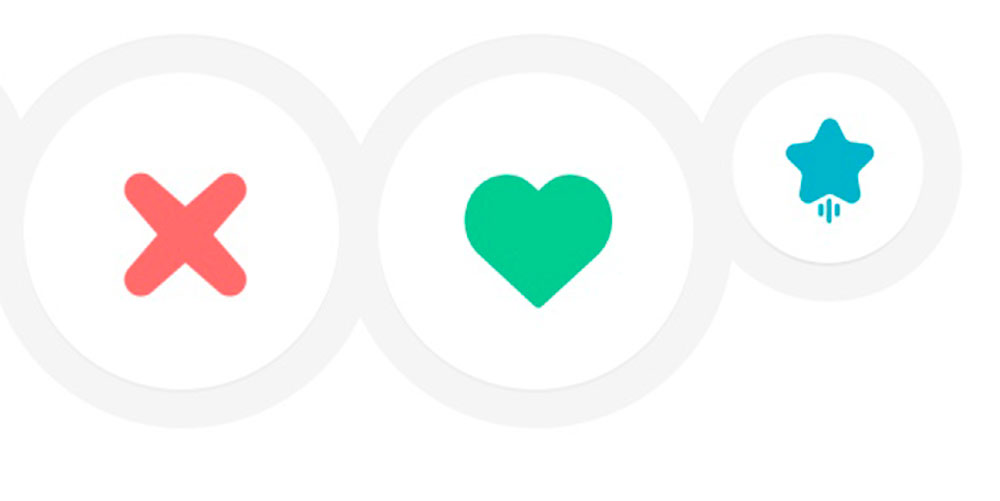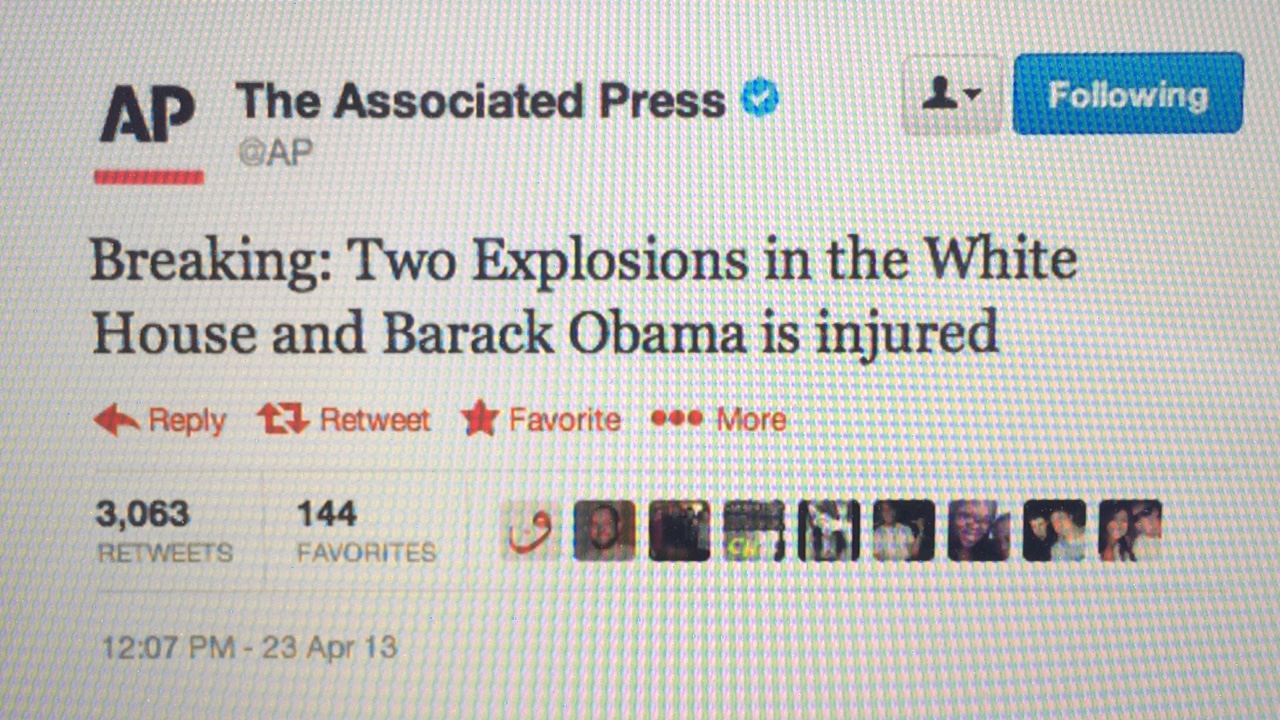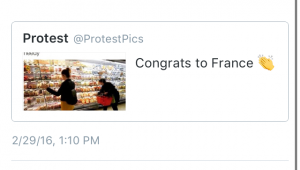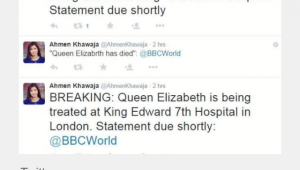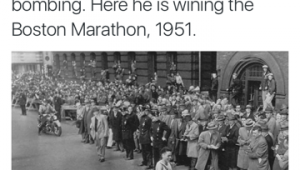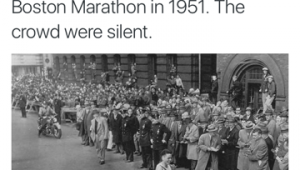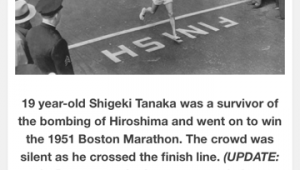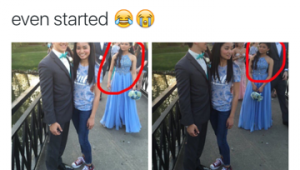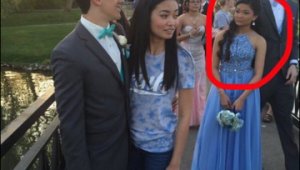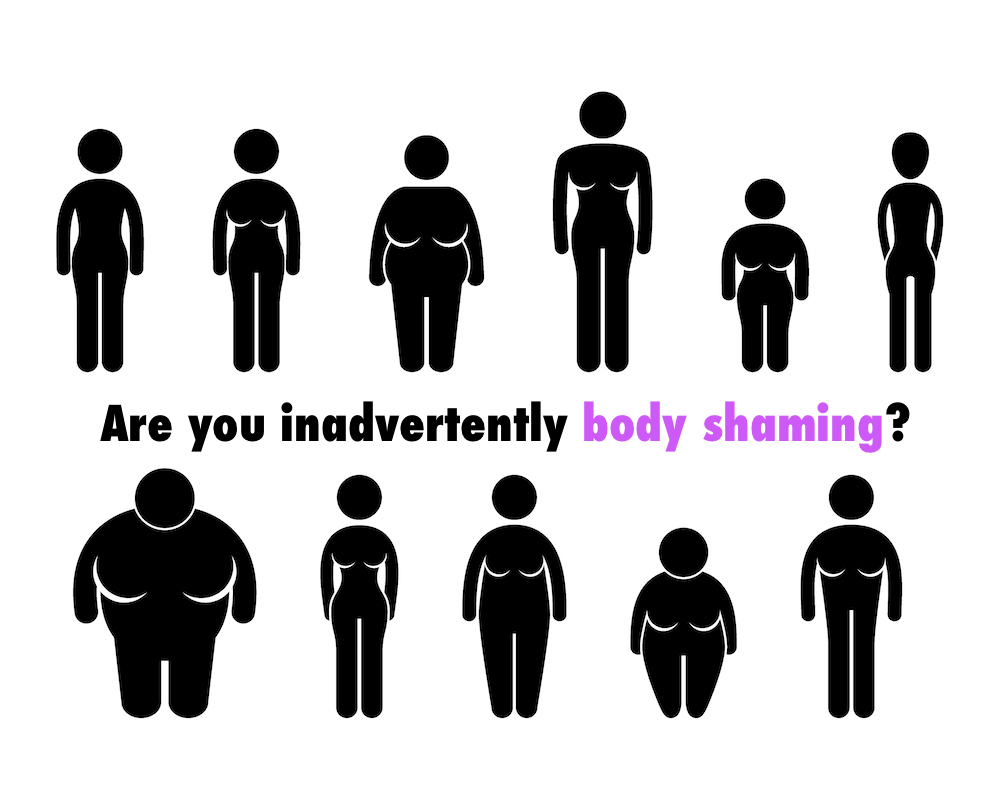Feminism Taking A Stand in Comedy
There has always been a long-existing stigma surrounding funny women and women in comedy within our society. But why is it so surprising that women can be funny?
And why are male comedians who make light of subjects like rape and sexual abuse not given a second thought? Is it because our society views degrading behavior towards women as “just joking?” It isn’t “just joking.” And thankfully, the strong presence of feminist female comedians and their even stronger comedic style addresses these feminist issues.
Comedian Jessica Williams of "2 Dope Queens,” who also makes appearances on the Daily Show, expresses her pro-feminist comedic style; it shines light on the issues, while making the audience laugh. These are two separate entities, rather than taking these critical issues lightly through the crutch of comedy.
Jessica Williams also stated in an interview that she was a victim of sexually harassment, and by a famous actor; this shows how even a strong woman of color, not only in society but as a powerful woman in television, can be taken advantage of by a man. But it's William’s courage to share her story, rising against those men that feel they can control and silence women. But Jessica is one heroing example of women who stand up and fight.
Another feminist female comedian worth mentioning in this article is Emily Heller. Heller discusses feminism and feminist issues as a comedian. She talks about the cliches associated with feminists/feminism and the real issues. Heller presents these issues in a way that is funny but doesn’t take away from their value or make them less meaningful through the use of comedy.
One of the most recognizable female comedians in the past year, Amy Schumer, has also faced issues of slut-shaming in relation to comedy. In one interview with comedian and actress Amy Schumer, the male interviewer had the nerve to call Train Wreck "autobiographical." He then proceeds to say that Schumer’s performance in said movie portrays her as a “skank” and that it is a depictions of “the character of the movie.” Amy Schumer’s comedic style is hilarious. She uses her own personal experiences to poke fun at herself and make light of her insecurities. As a result, she make others laugh. The audience does not laugh at her expense, but at the delivery of her jokes. It makes us, the audience, look at ourselves and attempt to take our own insecurities as light-heartedly as Amy Schumer.
The presence of feminists comedians is not only existent in females, but also feminist male comedians. Comedians Seth Meyers and Jay Baruchel have said some of the strongest women they know are those they’ve worked with. Even Louis C.K. has addressed feminist issues in his comedy stand-up performances. “Globally and historically, we’re (men) the number one cause of injury and mayhem to women. You know what our number one threat is? Heart disease,” Louis C.K. said.
This joke addresses that there is a historically proven problem in which men treat women in our society; however, Louis C.K. has had seemingly mixed views on his feminist position, or at least in terms of those views he has outwardly expressed.
But some men in the public eye that consider themselves as feminists remain firm on their position as such. “I’m constantly annoyed by how terribly written most females are in most everything - and especially in comedy. Their anatomy seems to be the only defining aspect of their character, and I just find that untruthful and it straight up offends me. A lot of the strongest people I know are chicks. As a viewer, I get a kick out of watching actual women. And I like writing strong women. Because as a straight male, there’s nothing more attractive to me than a strong girl,” says comedian and actor Jay Baruchel.
It is men like Baruchel who not only recognize women's ability to be talented within the world of comedy; but also men who work alongside these strong females comedians, and treat them as such.
The Simpsons Hip Hop episode to air
2016 will go down in history as the year of The Simpsons hip hop episode. It has been revealed that the enduring yellow family will air an hour-long hip hop special in January 2017.
The Simpsons hip hop episode, “The Great Phatsby,” will also be an ode to The Great Gatsby.
In the episode, tyrannical millionaire Mr Burns gets conned into bankruptcy by a music mogul suspiciously similar to Terrence Howard’s character from "Empire."
In order to get his money back, Burns enlists the help of rapper Jazzy James (played by Keegan-Michael Key, of comedy duo Key & Peele), the mogul’s ex-wife (played by Howard’s wife on Empire, Taraji P Henson), and, because they have to be part of it, Bart and Homer.
Executive producer Matt Selman explains the story behind the special episode. “This was just going to be a regular episode, but the table read went so well. In a fit of passion and excitement and ambition and excess, we decided to supersize it." He added that "we haven’t done a huge amount of stories in the world of hip-hop and rap culture, so we just went for it”
The Simpsons 28th season will include the special episode. It will also include the show's 600th episode.
The show’s executive producer, Al Jean, made one quip about the hourlong special. "I just pray it won't be the last thing people see before a Trump inauguration."
Makeup: Creative or Crippling
Makeup first seemingly appeared a in Ancient Egypt, smudged around the eye in what we today would call eyeliner. But back in the early ages of BC, Egyptian women used kohl. Kohl is a substance made out of easily accessible resources at the time. Such ingredients include lead, ore, copper, burn almonds and ash, among a few others. Kohl became the first true female makeup product, used as eyeshadows and an eyeliner. Kohl is also seen as an ancient eyeliner in India during the Gupta Age from the 3rd to the 5th century A.D.
This cosmetic also became popular as an eyeshadow in Ancient Greece. Believe it or not, having a unibrow in Ancient Greece was considered to be a thing of natural beauty. Greek women during this period even went so far as to cosmetically apply fake animal hair in between their brows.
Lipstick has been existent since prehistoric times, using it as a lip taint and made from natural resources. Such material includes fruit and plant juices, and even animal blood. It it also noted that Mesopotamian women were the first true creators of lipstick. They used a method of crushing jewels to make it into bold lip stains. Lipstick gained popularly in Ancient Egypt and Ancient China. Yet, it was the Elizabethan era that lipstick gained a stronger global popularity. A strong lip was the feature that stood out the most. It contrasted the pale, powdered skin, to appear more pale, and the lack of eye makeup and eyebrows.
We then skip to the Victorian Era, where minimal to no makeup was valued in society. Women who could afford it, used face cleansers to achieve the look of clear, young, and healthy skin. Any type of rouge or blush during this period could be viewed as tacky or pertaining to low class.
[youtube id="g08-_NExOX0"]
From the beginning of makeup during the prehistoric era, cosmetics have been made to change an individual's appearance. Hunters used makeup to better camouflage themselves while tracking down prey. Others employed cosmetics to show their devotion to their gods and their beliefs. Even Ancient Egyptians used eyeliner as a statement of class and power, in both men and women. Some scientific research even suggests Egyptians may have used it as a preventative for bacterial infections. But somewhere along the way, makeup became a social pressure and an expectation for women to wear makeup.
Makeup is becoming more openly accepted for men to have the creative freedom to explore and use makeup. However, the concept around makeup can be crippling for women. Women are expected to live up to higher standards than possibly attainable. Many boys and men don’t have the social pressure put on them of in terms of wearing makeup. However, this does not mean that that isn’t a social pressure of conformity in itself for men.
One study showing men and women’s skin reveals that women having a lower pH in terms of their skin. This means that it is overly acidic and oily in nature. Such a report of genetically born females tends to be linked to female hormones, menstrual cycles, and pregnancy. The pressure for females to have “perfect” skin is a struggle and is unbearable for many women.
I remember getting ready for a party once. I was so upset with the appearance of my skin after picking at it all week. Despite trying to cover it up, I just couldn’t. I ended up staying in my bed in the dark, and watching Gilmore Girls re-runs all night. All I could think about was that I didn’t want a room full of people looking at me and thinking “ew.” Even though that is completely untrue and no one could give a single fuck about what my skin looked like. But my own psychological obsession around this concept of women needing to have perfect skin to openly co-exist was falsely stuck in my head.
While makeup can be fun to experiment with, I believe that the conceptions surrounding painting your face, so to speak, should be fun. It should not a social pressure or a fear of not looking up to other’s standards when in public. The presumption that all women have to walk around with defined brows or a sharp winged eyeliner or contouring that is “on fleek” every time they walk out of the house is ridiculous. While all of these cosmetics may enhance your beauty, it is not the foundation of your beauty. You are.
Online Dating: From the 90s to Now
This week, I decided to delve into the ever so popular topic of online dating. I wanted to know if this “hook-up” culture that is often referenced in our society, and if it's actually happening as much as it is discussed. I was also curious whether advances in technology could be the result of changes in the dating game. So what is the online dating scene like, both for millennial as well as long-term online dating users?
Among the most popular and heard about dating sites include eHarmony, Match.com, Tinder, Bumble, and OkCupid. Eharmony first appeared in 1997 by psychologist Dr. Neil Clark Warren. Warren's has spent 35 years practicing and counseling thousands of married couples. Match.com originated in 1995, serving as one of the first major online dating sites for over 20 years. This site also paves the way for new online dating platforms in a way. According to Match.com, 44% of adult Americans are still single and 40 million Americans use online dating services. These statistics are drawn by Match from the U.S. census.
The infamous Tinder first arrived on the scene in the spring of 2012, successfully taking on a new generation of online dating, so to speak. But is it just a hookup site, or is it evolving since its initial launch? It is this question that I will explore in my research of online dating. Although OkCupid has been a part of the online dating sphere since 2004, there is only an estimate amount of 1 million active users from the site. There are also no age brackets. A 50 year old can message a 20 year old. It doesn't allow the user to choose their age of interest.
Bumble, despite it's some-what recent launch in December 2014, has surmounted over three million active users reported in March 2016. The starts of Bumble's creation is a result of Tinder co-founder Whitney Wolfe, who decided to leave the company. Wolfe's charged her boyfriend and co-founder of Tinder, Justin Mateen, with sexual harassment. Bumble presents a new, feminist approach to dating, allowing the woman to make the first move. Only women can send the first message. The platform consists of different facets for different relationships. It offers different features that enable users to engage in their choice of relationship, whether it's romanic or friendship based. The company is also looking to encompass the LGBTQ community, but has yet to do so.
OkCupid released the ‘Identity’ project, motivating users to start discussions in relation to gender and sexual orientation. However, this seems to be the extent of the involvement of the LGBTQ community within these dating sites. None of these forms of online dating has seemed to make any notion or movement to accommodate individuals with gender identities outside the gender binary. Nor does it acknowledge the diverse range of sexual orientations. It isn’t as simple as having an attraction to “men” or “women” or “both.”
Recently I joined Tinder, partly for the purpose of writing this article, partly out of curiosity. And partly because as a single person, Netflix can only entertain me so much. In my case, the simple swipe of a button based largely off of appearances heightens expectations. It also limits those you would otherwise consider if you had met for the first time face-to-face. However, such sites and apps give singles a direct road that surpasses two of the biggest questions when it comes to dating. Those questions are: are you single and do you have an interest in that person.
Yet, reports show that in 2016, that only 13% of Tinder users claimed relationships lasting longer than a month. These statistics stand, despite Tinder obtaining 9.6 million daily active viewers reported in 2015. This report also states that 20% of Tinder users are using the app for a hook-up. Those looking for a hook-up is split almost half and half with 27% of users are looking for a significant other. And a whopping 53% of users are using Tinder to find friends.
According to OkCupid statistics in a report published by datingsitesreviews.com, monogamy reports from users of the app have decreased by 12% since 2010.
So is this new generation of online dating really as successful as it was in the 90s? It doesn’t appear to be that way. Based off of this research, it seems that it is simply the “hook-up” generation that has taken hold through these new platforms.
The Hunt for Information: Online vs. Offline
Over the past two weeks, I have been visiting the great north woods of Copper Harbor, Michigan. The peaceful, quiet town, free from anxiety and pollution, is also free from 4g and wifi. So I have decided to write about the experience of writing without wifi and what this experiment would entail for my research. To do this, I decided to check out local libraries and compare the resources available there to those available online.
Upon first exploring the Copper Harbor library, which was right down the road from my cabin, I was surprised by the selection. Reference works from Britannica. Webster’s New 20th Century Unabridged Dictionary. The Random House Dictionary of the English Language. All for a population of only 50. There was also a wide art section ranging from Warhol, to Eskimo Art, to Matisse and Manet.

The library had a whole separate room for Philosophy and Existentialism. It overflowed with the works of Aristotle, Blaise Pascal, Karl Marx, and Martin Heidegger. The library also contained volumes from historians like Edward Gibbon and Plutarch. The stand-in librarian explained that the library's owner, Elsebet Jegstrup, was a philosophy teacher. She donated the majority of the library’s materials from her personal collection. Jegstrup had even included printed-off PDFs from philosophical articles, an interesting way in which online resources trickled into the offline world.
As it turned out, Jegstrup was not alone. Locals donated most of the books in Copper Harbor’s library collection. At first, I assumed that, excluding Jegstrup's eye-opening collection, these donations would mostly consist of fiction. But when I stopped by the library a second time, I noticed a table marked "$1 Book Sale." The sale contained school-issued psychology books, books on politics and political theory, and staples like Jane Eyre and Hamlet. There was even some Dante.

The library also offered a generous religion section. The substitute librarian who was in during my first visit to the library stated that he was a retired preacher for an Episcopal church. He told me that he lives locally, between this town (Copper Harbor) and the town of Eagle Harbor. He also mentioned that he used this library as his main source of information and to dig up resources for his sermons. The small, house-sized library also contained an array of language books, with dictionaries and translations in French, Spanish, Danish, German, and Italian. Although this section only consisted of about 10 books, it offered a larger selection than that available at the Houghton library, which was to be the site of my next visit.
On Thursday, I made my way to the Houghton Portage Lake District Library, about an hour away from Copper Harbor.

While I was there, I decided to go through the bookshelves and check out the local resources. The broader sections covered birds, astronomy, archeology, western civilization, cooking, child-rearing, dog-breeding, naturalist perspectives on animals and plant life, dictionaries and thesauruses. Librarians had dedicated bookcases to art and home projections and collecting, along with separate sections on artists like Davinci and Rembrandt.
The library had records on music too, covering genres like jazz, the history of women in country music, and famous musicians like Bob Dylan and the Beatles. There was also a wide range of books on sports. These covered coaching and drilling, but also harrowing sports stories like Pat Conroy’s autobiographical “My Losing Season” and biographies like John Feinstein’s “Next Man Up.” And, of course, there were over two dozen of Chilton’s volumes on vehicle repair manuals through the 1980s and 1990s.
This library also included an array of publications on Presidents, covering everyone from George Washington to Lyndon B. Johnson. This section even provided a handful of Bob Woodward books on President George W. Bush. The war section included at least 25 books on the Holocaust and World War II. There was also an ample supply of books on the Civil War. However, aside from these two focal points, the war section didn’t seem to be very extensive.
Scattered miscellaneous books on other, less common topics were shelved amongst other unrelated works. I found two books on Chicago, no longer than 400 pages each. My hometown was one of the few major cities covered specifically. The others were London and New York City. Sections on Ancient Egypt, Greece, and Rome, as well as the Middle Ages each offered only a few books. The library also housed four books on Mayan civilization.
The Houghton library’s geography section had numerous books on Britain, Ireland, Mexico, the U.S., Norway, and Sweden. However, the more I looked at this shelf, the more I realized that few of the books covered anywhere but North America, the U.K., and Scandinavia.
The Portage library also had a minimal literature section. It housed a few canonical British works, a random group of Alfred Hitchcock mysteries, and the Oxford book of 20th Century Ghost Stories. Although Houghton provided a strong biography and autobiography section, the library seemed to offer the same number of takes on Mark Twain's life that it did of his works, four.
The library piled education texts next to subjects ranging from the evolution of online corporations like Google and eBay and books on the Chinese government's international relations. Librarians shelved books on child illnesses and disorders, ADHD, and hyperactivity with books on the history of wood. Those about Houghton's booming copper business shared shelves with books on solar and fusion energy. Books about American health and dietary habits lay side by side with six or seven publications on nuclear safety.
There library also had a section dedicated to health. This primarily featured books on aging, weight loss, and home remedies. There was also a large variety of books on medical topics such as alzheimer’s and cancer. However, there seemed to be a smaller collection of available resources covering autism. And the few texts discussing topics like anorexia and depression were shelved here too, with no division between physical and mental health.
In contrast, the internet allows near-global access to information stored physically in specific locations. This makes it possible for researchers to use the resources of cities they might not have the means to enter. Many national studies are also widely accessible because of their availability online. This allows internet users to find information on various topics easily with the aid of a search bar. In-depth studies by doctors and researchers have limited readership when restricted to the physical sphere, but when they are added to the large world of online resources, even laypeople can find and peruse these works. So, in the absence of internet access, one stands to lose a very wide pool of source material and information.
But those who lack access to online resources, may rely on experts and other researchers studying the topic at hand. These people can often provide background information, anecdotes, and accounts from real life experiences, as well as context for the information in studies and papers. These contextualizations in particular are often hard to find online.
However, although books are prime learning resources, they have their downfalls. Books can contain false information. The same may be said of other offline information sources like personal interviews. Personal views may obstruct the nature of a study or skew information. So can personal motives. Such is the case in police reports tainted by lying tactics. Politicians who have notably lied while in office, such as Richard Nixon or Bill Clinton, also come to mind. Researchers may detriment their information's reliability by using only one treatise, interview, or source. But this problem stems less from the offline nature of these resources and more from the inherent limitations of using only one perspective in research. Editors and scholars generally vet and fact check reference works and published studies.
This is not always the case with online information. Additionally, the line between reliable and unreliable sources can blur online. I recently discussed the reliability of information released on Twitter, where some accounts don't hesitate to release faulty information, although only 140 characters worth, to the masses. But not all of these flagrant tweet-lies come from fake accounts, purposely misleading "news" accounts, or satire accounts retweeted out of context. Hackers write some of these fake tweets using ordinary Twitter accounts.
More than anything else, location, demographics and interests determine the resources physically available in places like Copper Hill or Portage. Too often providing unbiased perspectives is under-prioritized. This is really where the online supersedes the offline. Individuals far from large cities can find many of their resources online using personal or local library computers. However, this access is often harder to come by in towns like Copper Hill.
The internet will always have both positive and negative impacts on our daily lives. It will continue to provide both accurate and faulty information. But the great online globe's resources and support will continue to aid researchers. As will libraries, books and scholars. Researchers, whether they be students, professionals, or just curious individuals, stand to gain from both online and offline sources.
Twitter: Enabling a Generation of Lazy Researchers
In the age of technology where hundreds of millions of people use twitter in the form of business, news, comedy, politics, and personal use.
We live in an era where the technology that we have created has made our society into having access to quick, easy information at the touch of a button that gives us the immediate answers that we “need.” Our growing greed may even be willing to accept ill-informed sources or content lacking in research.
These 140 characters or less of concise information have no merit to them, I have found, after researching them myself. Here are a few examples of tweets that I have come across on my twitter feed:
From the mistake of a simple photo, where History in Pictures twitter account tweeted a photo of Leonardo DiCaprio and Kate Winslet behind the scene of Titanic. The caption along the top of the photo stated, “Snoop’s senior photo, 1989.” Although this is a small, obvious mistake, the tweet has not yet been deleted.
Another example is shown in a case of misappropriation through a tweet by the twitter account Regina George, which had been favorited by over one thousand people within two days of posting the tweet. The way the picture is conceived, the tweet shows photos of a girl visibly upset with her supposed prom date who was taking prom pictures with another girl. The caption above the photo says, “Prom was over for him before it even started." However, this situation is misconceived. When I first saw this photo, I had to do a double take. The girl’s actual prom date is the guy right behind her in the second photo. I know this because the guy behind the girl is my cousin and his girlfriend.
"College tuition in France costs $400,” was tweeted a few months ago by the twitter account Common White Girl. The account has often displayed behavior of copying content and posts from other accounts under its own twitter name. This tweet popped up after someone I followed retweeted this post. Although the tweet from this account has since been deleted, there is still evidence of the statement's remains around the twitterverse. This statement isn't completely untrue, there are extenuating circumstances to this situation. While the tuition cost is much lower according to www.studyineurope.eu, showing that first cycle degrees or bachelors degrees only cost 189 euros per year at public universities, this case is not always the same. Pricing is dependent on both the choice of school as well as the major and program you decide to follow. Tuition in France, between their offered private and public schools, can range between 500 and 10,000 euros. While much cheaper than the cost of a bachelors degree or even masters and doctorate program in America, it is not completely accurate to say that college tuition in France is $400.
History in Pictures also released a tweet involving Shigeki Tanaka winning the Boston Marathon in 1951. In one tweet released by History in Pictures, it is said that “Shigeki Tanaka lived just outside Hiroshima at the time of the bombing. Here he is winning the Boston Marathon, 1951.” Yet, 4 days later, History in Pictures tweeted the same picture with the caption, “Survivor of the Hiroshima atomic bomb, Shigeki Tanaka won the Boston Marathon in 1951. The crowd were silent.” After going through several websites where this tweet seemed to come from the tumblr and imgur trackless rabbit holes, one Wordpress website included this photo along with other vintage photos and captions. Yet, this the author of the website also pointed out that a commenter, Peter, found that Tanaka lived over 20 miles away from the Hiroshima bombing site. It is also noted that Tanaka was at home when the bomb dropped. Therefore Shigeki Tanaka is not technically a survivor from the bombing. These are just a small few examples that I have found over the past few months while scrolling through my personal twitter account on my own time.
These sites such as History in Pictures may already be preconceived as playful, small accounts that occasionally post information on historical or current events. Although these twitter pages are by no means near the same vector in quality of research from official news outlets like CNN, AP, and BBC. Yet, even the twitter accounts of these hard-hitting news publications are subject to mistakes. One major example of falsely reported information by supposedly accredited resources is shown through a tweet by BBC journalist Ahmen Khawaja in early June of last year. Khawaja tweeted, “Queen Elizabeth has died.” While the tweet was quoted by Khawaja who tagged BBC World’s twitter account, suggesting that BBC World was the original source. The fault was nonetheless that of the reporter Ahmen Khawaja releasing such information preemptively where twitter followers of these accounts may have only retweeted the claimed death of the Queen. The focus was on the Queen's alleged "death," rather than the tweet posted before about Queen Elizabeth being treated at a hospital, or the tweet that came after claiming that Queen Elizabeth’s death was a false alarm.
Although some of these tweets have been deleted since their posting, it doesn’t retract the tweets that have been viewed by thousands, even millions, of followers who have seen this information and have shared it with others via the online rumor mill of retweets or copying and tweeting these false posts. Screenshots can be very powerful, and once these short messages are released to the public to mass amounts of people, it isn't as easy as simply deleted what you said. Like the saying think before you speak, it is just as important to think before you write.
Body Shame and the Female Figure Throughout History
In the past, we have gone through numerous eras where all over the globe, different regions have had different time periods of what the “ideal” feminine figure was “supposed” to look like. In ancient Egypt during the early 1000 B.C. era, women who had symmetrical facial features, a high waist line, a petite, toned body and thin, narrow shoulders were idolized as the period’s desired female body. However, in ancient Greece between 300 and 500 B.C., women aspired to have a fuller figure with “plump” body features. This fuller body type was also worshiped during the ages of Italian Renaissance between 1400 and 1700, where woman with a rounded stomach, larger shapely hips, and bigger breasts were admired. During the Han Dynasty between 200 B.C. and 220 A.D., however, a slim waist and a small frame seemed to be model body type of women in China during this period.
Yet in westernized America, the culture of the female body and how it is portrayed in the United States only dates back to a few major eras between the 1600s and the 1900s. America has only had 400 years of history on the female form and how it is viewed in American society. Yet, the female figure was strongly influenced by other cultures, mainly British trends during these Georgian and Victorian eras. For example, during the 19th century women seemed to adore the Lillian Russell body type, an actress and singer who took on the Victorian England figure during the later half of the 1800s where woman with full figured bodies and cinched waists were thought to have the exemplary female body type.
However, within the 20th century alone, there have been decades of constant change where a new body type was idolized in U.S. culture or heavily influenced by other cultures. When the roaring 20s came into play, full or flappers and constant movement to the rise of jazz and ragtime, the petite and low, drop waist figure and a smaller bra cup size was very popular. But by 1950, the “hourglass figure” gained tremendous recognition with the famous Marilyn Monroe serving as the ideal 36-21-36 body measurements. In the 1970s, well known celebrities like Farrah Fawcett represented the ideal tall and lean body type. By the 1990s, the petite and small-framed figure was represented by Kate Moss and admired by woman of the time who coined the body type as “heroine chic” in the sphere of modeling. Now, in the 21rst century, the desired female form has taken on a new shape, influenced by celebrities like Kim Kardashian and Nicki Minaj with a larger bottom, bigger boobs, and a small waist.
Yet, although we have had a short-term establishment of developing views and ideas in the U.S., women's body's have always been a global topic of discussion and trends. Now, in 2016, there is still so much hate and so much negativity spread during the teenage years where children enter into the stage of adolescence in middle schools and high schools. And now, that same sickening hate has taken on a new vicious form in how it is distributed on a colossal level throughout the multiple social media platforms that contain comment sections. Although body shaming has taken on a new form with the rise of the internet, the same concept of needing to look a certain way in our society has existed in magazines with body trends set by celebrities or models. The idea of plus sized models didn’t even really come into existence nor was it recognized until 1998, when Ford plus created a range for plus size models.
Since 1959, when the famous Barbie doll first appeared in stores and under Christmas trees across the globe. The doll has lead an impossible standard with biceps 7 inches in diameter, a 16 inch waist, 29 inch hips, and 16 inch thighs. The Medical Daily Pulse reported that a real life Barbie with these measurements and her estimated height standing at 6 feet in proportion to Barbie’s measurements is unrealistic and physically impossible. Even Disney’s numerous princess set unreasonable body standards. Some include Ariel, Jasmine, and Belle who visually displayed inconceivable waistlines that neared the same measurements as that of their necks.
Why is it that our culture sexualizes our bodies as objects of desire rather than accepting bodies that we can exist comfortably and healthily in.
My sister always tells me how she wishes that she had no butt like me, or thinner arms like me. But she is a much healthier person than I am. She works hard to take care of her body, with exercise and clean eating. And although it is idolized to eat whatever you want, so to speak, without the appearance of adding on a single pound, maintaining a healthy lifestyle is an important part of life and taking care of your body is essential.
There is a difference between being fit and being healthy, and just because you are “fit” DOES NOT mean you are healthy. The Eating Disorder Hope website released a report that highlights exercising addictions and eating disorders that the general public may not be as aware of compared to disorders such as anorexia and bulimia, such as orthorexia which is said to be “an obsession or fixation to eat only healthy foods and to avoid entire food groups.” This report also shows that certain publicized diets, such at the Atkins Diet, which severely depletes the amount of carbohydrates that the body needs. Similarly, although binge eating disorder is often mentioned in health education classes when discussing anorexia and bulimia, from personal experience it is not discusses to the same extent. In a report by Web MD, binge eating disorders and the research among them in men are often overlooked and not examined in men as much as women, even though Web MD states that both men and women have similar rates in relation to the binge eating disorder.
When I was about 12 or 13, my aunt pulled me aside and told me that me telling my cousin she was skinny is viewed as insulting, that those types of adjectives like scrawny or underweight are slanderous, words that have been associated with eating disorders like anorexia and bulimia. Unintentional hostility or saying something about someone’s body behind their back is still hate.
What gives anyone the right to tell you that you can’t wear a crop top because you aren’t of a certain waist size? Or that you can’t wear shorts because of the appearance or size of your legs? As long as you like the way you look and you are confident in your own body, the opinion of other’s shouldn’t matter. Yet, we live in a world where our own appearance and self value is viewed through the looking glass of others. But the only way to change this conception of idolizing certain body types or worrying about what other may think of your body is to be happy and feel self-assured in your own presence. Whether you want to gain a certain amount of pounds or loose a certain amount of pounds, or if you want to work on getting your butt in shape or you’re a man or women who wants abs of steel, then do it. But do it for you, not for anyone else.
7 Tips for Studying Abroad on a Budget
If you’re enrolling or plan to participate in a study abroad program during your college years, there are some things you should know before you go, especially if you are on a “I only have the money I saved up and brought” budget. Here’s how I survived 4 months studying and traveling Europe with $2,000.
- Get a credit card with a chip in it and do your research on which cards have lower foreign transaction fees. And remember to take out enough euros and pounds, depending on your long-term location, before you leave your forgiving motherland that doesn’t have these fees. I am NOT about those foreign transaction fees and spending money that I don’t have just to take money out, and I’m sure you won’t be either.
- Leave 4 and a half hours early to get to the airport. Doesn’t matter if you are a "leave the house 20 minutes before you have to be there" person. Get your shit together and leave early. You’re in a strange country, you don’t know where you’re going, and sometimes, the bus pick-up to the airport turns out to be a shady, dark lot for stationed buses that your google research directions lead you to, rather than where you were supposed to go. Or facing bus delays and missing your flight with 3 months worth of luggage and pathetically crying to the cold British airport clerk who you just want to punch in the face for being so insensitive. Unfortunately, the problem isn't her fault. So get there early.
- Don’t stay in an airport over night. If you think you’re saving money from the hostel costs by leaving a day early, you just end up spending the money on airport food anyways and you feel like a scum bag laying across a row of seats in your own filth. Stay an extra night, take a shower, sleep in a bed, and buy enough pasta for the weekend.
- Plan a budget. Don’t go crazy with clothes shopping or buying jewelry in the country where you’re spending 3 months or longer. Be aware of how much you are spending a week on groceries, and plan out how much money you will need for a trip to each country, including food, flight, hostel, and a little extra souvenir money. Suck it up and eat pasta throughout the week if you want to go to Ireland.
- Get a lock for your backpack. It’s a pain in the ass to travel with a turtle shell on your back and not see what’s going on back there. It is extremely easy for pick pocketers to open your bag and take something, and you don’t feel a thing. Or pack all of your underwear at the top and have them strewn along the streets of Paris. A little embarrassing, but from personal experience I'd rather have someone take my drawers than having all of my money and identification stolen. Plus, you get the gratification of picturing the look of disgust on the thief's face when they accidentally grab a hand full of underpants instead of your wallet.
- Don’t bother with a phone plan. It’s hard enough to figure out where you’re supposed to go and public transportation. Don’t bother with signing up for a phone plan that you'll only get 4 weeks out of before having to make your way back to the inconveniently located phone store and sign up for another 4 weeks. Just download an app like everybody else and use your residence hall’s wifi. And yes, you’re going to have to plan directions ahead of time, use maps, and ask for directions. The horror of not using our phones.
- Do your research on the hostels before you go. And if you can scrounge up for a room with less people, DO IT. I can’t stress enough the disgust and slight terror of living in a room filled with 14 strangers and three-tiered beds while the person in the bunk next to you is watching porn.
I hope these tips have better prepared you in your study abroad journey. Good luck, and remember to enjoy this traveling opportunity. You may not have another chance like this again.

